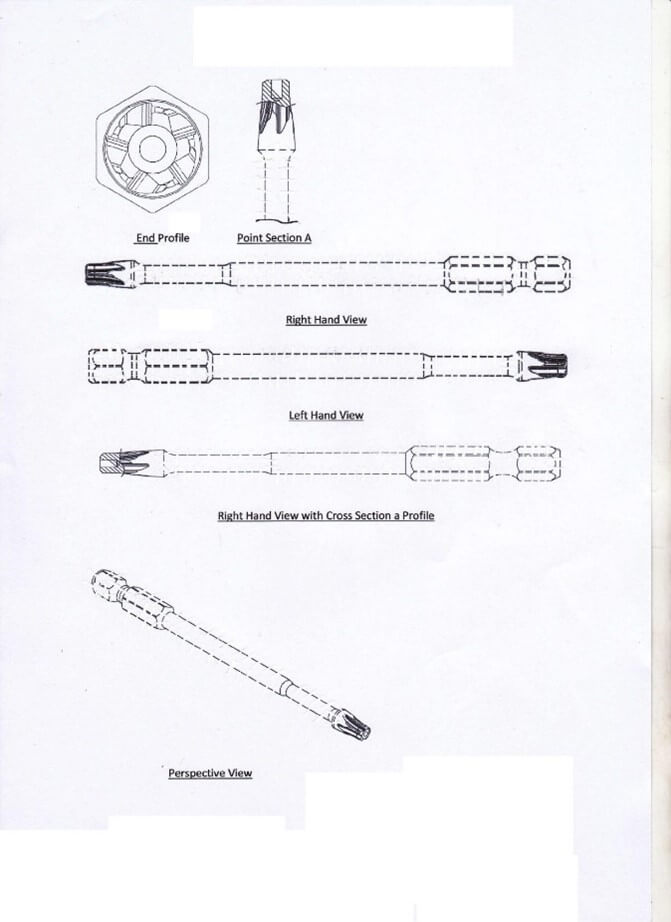
Update: Interpretation of broken lines in Australian registered designs
Where a registered design shows a whole product with a portion of it depicted using broken lines and the remainder in solid lines, the design may be read as being the overall article shown and not in such a way as to completely disregard the aspects shown in broken lines. This was the conclusion of the Australian Designs Office in Wynnes Patent and Trade Marks Attorneys Pty Ltd v Wamlez Pty Ltd [2023] ADO 3 (31 July 2023).
Background
Wamlez Pty Ltd (Wamlez) is the owner of registered design no. 201712220 for , ‘Driver bit for fastener’ (the Design) with a priority date of 18 April 2017 (the Priority Date). Representations of the Design are displayed below.

The Statement of Newness and Distinctiveness (SoND) filed with the original Design application was: ‘Newness and distinctiveness of the design resides in the shape and/or configuration of a driver as shown in the representations’.
Crimesafe Security Systems Pty Ltd (Crimesafe) sought examination of the Design, claiming that the Design not new and distinctive when compared to the prior art base as at the Priority Date. Crimesafe had the burden of satisfying the Registrar that a ground exists for revocation and that on the balance of probabilities that the Design is not a registrable design.
Interpretation of the Design
The central issue in the case was regarding the correct interpretation of the representations of the Design, which depicted the Design using a combination of solid lines and broken lines.
Crimesafe asserted that in making comparisons, all matters indicated in the broken lines should be disregarded and e only the end portion of the product depicted in the representations in solid linework depicted the Design. Crimesafe pointed to the product name, ‘driver bit for fastener’ as supporting its interpretation, which it viewed as indicating the end distal portion of the overall thing pictured in the representations.
Wamlez argued that this reading of the product name was incorrect and that the Design should be read as being the overall article shown.
The Delegate (examiner) noted that there was nothing in the Design application or registration showing the element in solid lines is a separable element of the product, and normally this would be depicted separately if so. There was also nothing in the SoND or otherwise that determined that the dotted lines or solid lines were the subject of the SoND.
Therefore, the Delegate held that the SoND had the effect that regard should be had to the Design’s shape and configuration overall, regardless of broken or solid lines.
Assessment of newness and distinctiveness
The Delegate considered that if the matters indicated in the broken lines were disregarded, the Design might be considered identical, or substantially similar in overall impression, to various distal end portions for driving products generally, irrespective of the total shape and configuration of, e.g., the handles, stems and end portions as respective wholes. However, if the overall shape and configuration of the Design was taken into account, the opposite conclusion would be reached.
As a result of the determination on interpretation of the Design, the Delegate held on the evidence that the Design was new and distinctive as compared with the prior art as at the Priority Date and the Design was not revoked.
This decision was not appealed to the Federal Court of Australia.
Key takeaway
When filing a design application, applicants should consider the impact of their use of broken and solid lines in representations. In the absence of a SoND or anything else to the contrary, the design is likely to be read as being the overall article shown.







